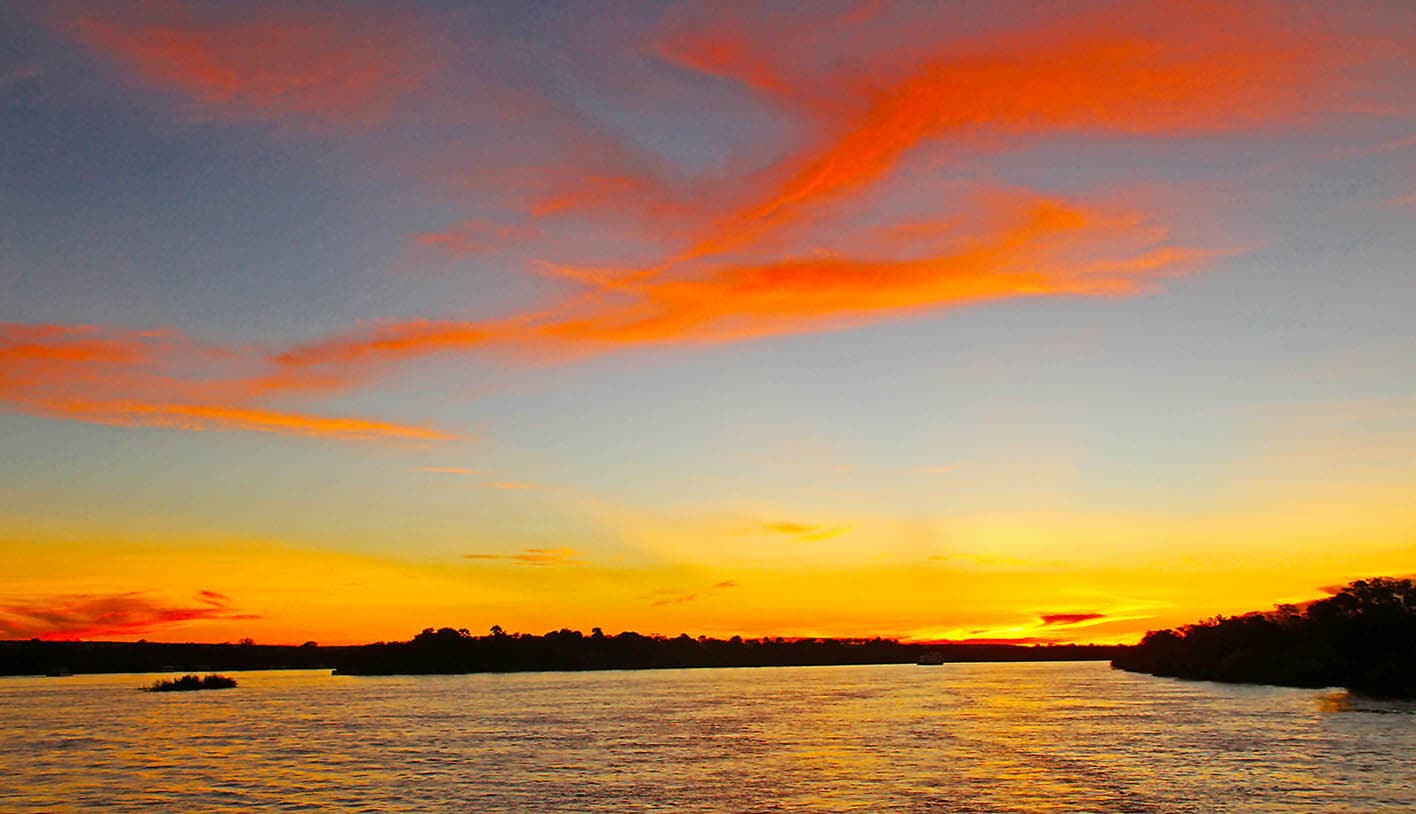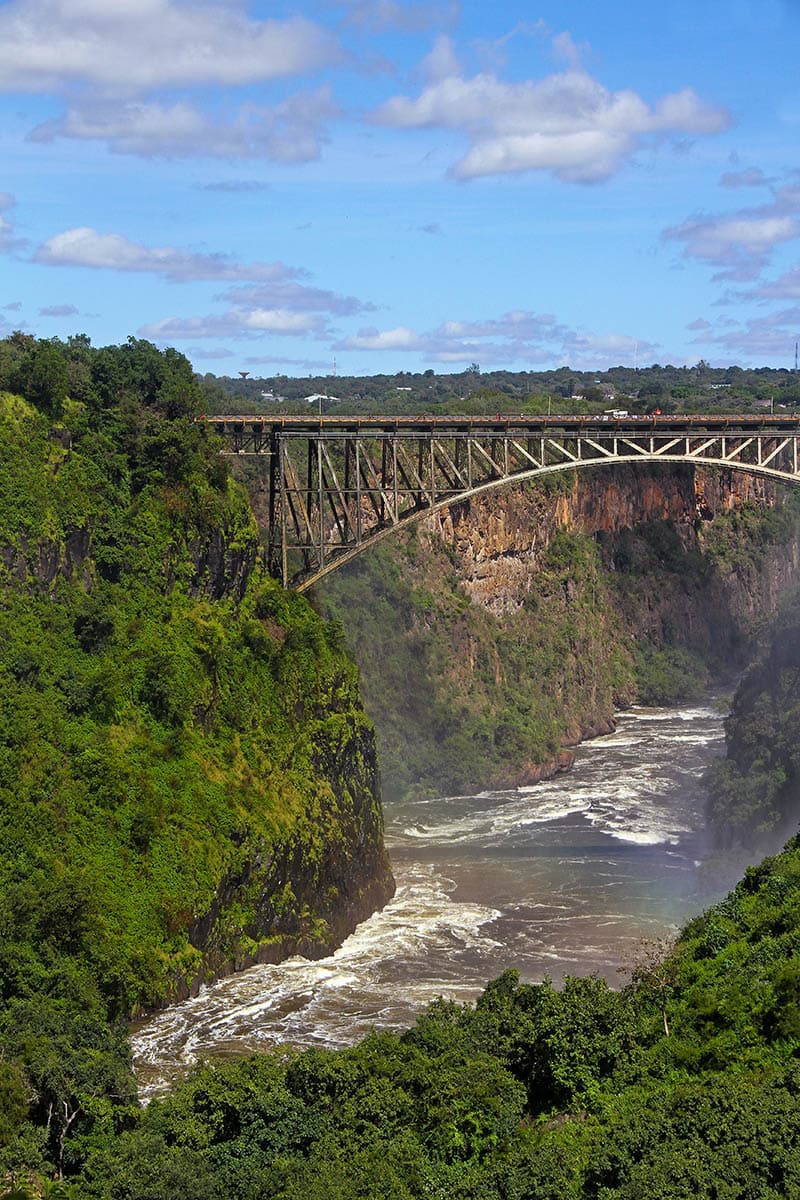Zambia’s Parks, Rivers and Falls: Best Things to Do
After visiting Zimbabwe and enjoying its spectacular national parks and Victoria Falls, it made good sense to pop into neighbouring Zambia. It might also be a good way to tick off the only other country starting with the letter ‘z’.
Since they border one another, visiting both Zambia and Zimbabwe at the same time is a good idea. They also share the famous Victoria Falls that cascade down the Zambezi River. Visiting this incredible site is just one of the many great things to do in Zambia though.
There are several large national parks in Zambia. These include Kafue, Lusaka, Liuwa Plain, Mosi-oa-Tunya, North Luangwa and South Luangwa. Like many parks in Africa, some are isolated. So, by a process of elimination, my list of things to do in Zambia was narrowed down to Mosi-oa-Tunya. This is because it adjoins Victoria Falls and South Luangwa. It also offers a wide range of wildlife.
A plan was hatched to fly into Lusaka the capital. Then onto South Luangwa before concluding my tour in Livingstone and Victoria Falls.
Top Things to do in Zambia: Wildlife Lodge in South Luangwa

After an enjoyable night in the deluxe Southern Sun Ridgeway Hotel in Lusaka, I headed back to the brand new Lusaka Airport. I was taking a domestic flight to Mfuwe International Airport, an hour away.
Mfuwe must be the smallest international airport in the world. Though I was assured there were occasional international flights to and from neighbouring Malawi, the only action I saw at the airport was the safari vehicle there to collect me.
My choice was Track and Trail River Camp. It offers just limited deluxe safari chalets located along a ridge just above the Luangwa River. Outside of the rainy season, the lodge operates a pontoon with immediate access into South Luangwa National Park. You get meals in the lodge in the open air. Other than that, an inviting bar adds to the enjoyment of sundowners in this remote part of Zambia.

Animals like the Impala graze on the floodplain of the Luangwa River in front of lodges
Our open-air dining area overlooked the floodplain. It was like watching the Discovery Channel in the evening with all sorts of Zambia animals grazing there.
The chalets have facilities like:
- flyscreen windows,
- mosquito net over the bed,
- ceiling fan,
- tea, and coffee-making facilities,
- hot showers,
- fridge, and
- a spacious semi-open verandah for watching the wildlife grazing on the floodplain below.
Shooting Wildlife

In the past, Africa’s big five animals (lion, elephant, water buffalo, rhinoceros, and leopard) were so known as they were the animals big game hunters wanted to shoot. Now, only cameras do the only ‘shooting’ in Zambia’s parks. As such, I was glad I had a long lens (200mm) with me. It really brought me a lot closer to the animals than with a standard camera (50mm).
Visitors travel to national parks to join in wildlife spotting safaris. One of the most popular Zambia activities. Not long after, I joined four other adventurers and headed off in one of the lodge’s open-sided safari vehicles.

Get close to wild elephants on a game safari in South Luangwa National Park
Our driver/guide had a keen eye and located animals before any of us did. Being open-sided, these vehicles are ideal for wildlife photography. There was enough room for everyone to take great photos.
Literally, minutes after departing the lodge, we spotted a herd of elephants grazing on the abundant vegetation that thrives here in the west season. What amazed me was how nonchalant the elephants and other wildlife were with our intrusion. They simply go about their routine seemingly without any interest in us at all.
Next, it was spotting a tower of Thornicroft’s (Rhodesian) Giraffes, which are endemic to South Luangwa. It was an amazing experience, especially when informed by the guide that only about 500 of this sub-species live on the planet and only in this park.

Thornicroft’s Giraffe is only found in South Luangwa Valley.
As the safari continued, we started ticking off animals like Common Waterbuck, Puku, Crawshay’s Zebra, Common Warthog, Velvet Monkey, and Spotted Hyena.

Observe Crawshay’s Zebra in South Luangwa National Park.
There is an impressive list of birds to sight too. If I was to offer advice to those contemplating a Zambian safari, it would be to bring a pair of binoculars to observe animals.
Of course, everyone wants to see lions. Up until the last day, our only sighting was a solitary female and her cub hunting in the dim light around the lodge. While difficult to see, it was thrilling to at least get a glimpse of them preying on a herd of grazing Puku.
It is not necessarily the big animals that captured the attention. What amazed me was just how close we could get to the animals in the wild. Impalas, for example, are all over the place. However, when you get within metres of these flighty animals, you realise just how lucky you are to be able to be amongst them. You almost felt like another animal grazing next to them.

Get within metres of wild animals like this male Impala in South Luangwa National Park.
Wildlife safaris are on the programme each morning and afternoon. While times vary from summer to winter, it means first waking at 5:30am for a light breakfast. Then, by 6:30am, you’ll be in the park as the sun rises. Most safaris return at 11:00am for an 11:30am brunch and then rest before an afternoon safari at 3:30pm. You get sundowners (sunset drinks) in the park and dinner at 7:30pm. This seems to be a Zambian game lodge standard and in many other parts of southern Africa.
Livingstone and Victoria Falls

Leaving the park was tough but with Victoria Falls awaiting, the decision was made easier. Seeing one of the best Zambia attractions meant a drive back to Mfuwe, flight back to Lusaka, and then another flight to Livingstone near the falls.
Every mode of admiring and experiencing Victoria Falls and the mighty Zambezi River is available. Operators in both Zambia and neighbouring Zimbabwe offer rafting, bungee jumping, flights, river cruises, and kayaking.
The best views of the falls from the ground from the Zambian side are within Mosi oa-Tunya National Park. Here, stands of rainforest thrive in moist, humid conditions. It was peak flow for the Zambezi but I was still amazed at the raw energy of the water cascading down the falls.
The sound, movement, and volume were intoxicating. With the river in flood, the water crashing over the edge creates rain and visitors have to wear a raincoat or get drenched. Enterprising locals make a thriving trade selling disposable ponchos.

The Zambezi River in flood crashing over Victoria Falls.
While views from within the reserve are impressive, the best way to appreciate their totality is from the air. It’s expensive but worth it! Zambezi Helicopter’s ‘Flight of the Angels’ was a dream come true for me. They promise and deliver a 13-minute flight in a figure of eight so that everyone experiences the view.
The cost of the 13-minute flight is US$165. The alternative, which I chose, was a 15-minute ultralight flight at US$180. Perhaps the only disappointment with the flight was that I couldn’t take any photographs. Passengers had to empty their pockets so nothing falls from the ultralight.

Take an ultralight flight near Livingstone over Victoria Falls.
I heard that when the falls are not in flood, it was possible to swim in Devil’s Pool right on the edge of the precipice.

Thrill-seekers can swim in Devil’s Pool at the edge of Victoria Falls.
River Cruise

The most relaxed way to appreciate the Zambezi River is on a sunset cruise in a small boat.

Admire the sunset over the Zambezi River near Livingstone.
Various sized crafts depart just before sunset from small crafts to big ones like the one I was on that had a band playing local favourites and a bar serving ice-cold beer.

Enjoy a relaxing sunset cruise on the Zambezi River near Livingstone.
Railway Rendezvous

A rail and pedestrian bridge links Zimbabwe with Zambia. It’s possible to walk the 2km between both. However, one of the most exciting ways to venture to the border is on the nostalgic Royal Livingstone Express, which uses historic carriages.

See the countryside from the observation car of the Royal Livingstone Express.
The company operates a variety of tourist trains using steam trains and restored heritage carriages. Bookings can be made at AVANI Victoria Falls Resort.

Livingstone Bridge over the Zambezi River.
Train ethusiasts can also consider the ‘The Pride of Africa’ one of the world’s great rail odysseys. Victoria Falls is an essential stop on the planned route. Today, Rovos Railway operates the train. It has services to Victoria Falls on a four-day, three-night journey that originates in Pretoria, South Africa and travels through Botswana and Hwange National Park before reaching the falls on day four.
Handicraft Heaven

Livingstone is a bustling service town with several international hotels. There are also a few interesting handicraft markets. Carved wooden masks and wooden bowls were at the top of my shopping list.

Shop for tribal masks in the markets.

Buy Zambian carved wooden bowls in local markets.
Zambia is an exciting country to visit that is accessible via a long but exciting and comfortable flight on Ethiopian Airlines that passes through five capital cities in 24 hours. While Victoria Falls, which it shares with neighbouring Zimbabwe, is the jewel in the country’s tourism crown, national parks and wildlife safaris also offer great things to do in Zambia.
Travel Tips
- Check with the Zambia Embassy before flying off but most travellers will need to obtain a visa upon arrival in either Lusaka or Livingstone.
- It is best to consult a doctor before travelling to countries like Africa. Carrying a small first aid kit with basic medicine also makes good sense.
- Large Zambia hotels and travel serve to accept credit card and there are money-changers at Lusaka Airport for changing money into the local kwacha.